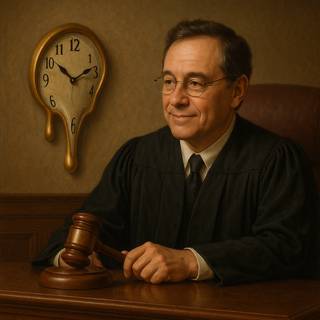When Does the Clock Start? Copyright’s Old Questions in a New Digital World
In the last five years, copyright lawsuits have climbed sharply. Court filings show steady increases, suggesting copyright is becoming one of the more actively asserted intellectual-property rights in the U.S. The trend makes sense in an increasingly digital and AI world.
But even as copyright laws adapts to new technology, some old questions remain surprisingly unsettled. Two of the biggest are when a claim begins, and how long damages can reach back. We now have a definitive answer to one, but not the other of these questions.
The Basics: When Does a Copyright Claim “Accrue”?
Federal law says you have three years to bring a copyright infringement claim after it “accrues.” But when exactly does it “accrue?”
There are two main views. One is the Infringement Rule. That rule says the clock starts the moment the infringement happens. The other is the Discovery Rule. Under that rule, the clock starts when the copyright owner discovers or reasonably should have discovered the infringement. The Ninth Circuit explained that “[t]o bar a claim before the copyright holder has any reason to know of the violation would undermine the remedial purpose of the statute.” [1]
Most courts have leaned toward the discovery rule, especially in cases where copying is hidden or only comes to light years later.
The Supreme Court Steps In: Warner Chappell Music v. Nealy (2024)
The U.S. Supreme Court’s decision in Warner Chappell Music, Inc. v. Nealy [2] weighed in on part of the issue. The Court assumed the discovery rule applied and addressed how far back damages can go once a claim is filed. Are damages limited to the three years before discovery, or do they go back to the beginning?
What the Court Said
If a claim is timely under the discovery rule, damages are not capped at three years. In other words, once you discover the infringement and file suit in time, you can seek damages for older acts, even those beyond the three-year window.
The Court reasoned that a separate “three-year damages limit” doesn’t appear anywhere in the Copyright Act. The only limit is on when you can sue—not how much history your damages can cover.
But the Court Didn’t Settle Everything
Here’s the twist: the Court did not actually decide whether the discovery rule is valid under copyright law. They simply assumed it applied because both sides had argued that way. That means the first question—when a claim accrues—is still open.
The Dissent: Three Justices Say Don’t Go There Yet
Justices Gorsuch, Thomas, and Alito disagreed. They argued that the Court shouldn’t assume the discovery rule exists at all. To them, the Copyright Act starts the clock when the infringement occurs—period. [3}
They also said the Court should wait for a case that directly asks whether the discovery rule belongs in copyright law.
A Two-Century Mystery
It’s curious that more than 230 years after Congress passed the first U.S. Copyright Act in 1790 [4], we still aren’t completely clear on something as basic as when a copyright claim accrues.
That first law gave authors the right to control “maps, charts, and books” for 14 years. That’s hardly a digital-age concern. But as the world moved from printing presses to streaming platforms and now to AI models, that basic question remains in limbo.
Where Things Stand
For now, the Supreme Court’s Nealy decision gives creators a longer period for damages, as long as they discover the infringement and file in time. But the bigger question—when the clock starts on a claim—is still hanging.
And yet, the discovery rule is the majority rule, so it will continue to apply in most jurisdictions for now.
So, two centuries after the first copyright law, we’re still waiting for a definitive answer on a fundamental question: when does the clock start?
Footnotes
1. Polar Bear Prods., Inc. v. Timex Corp., 384 F.3d 700, 706–07 (9th Cir. 2004)
2. Warner Chappell Music, Inc. v. Nealy, 601 U.S. ___ (2024).
3. Dissenting opinion of Justices Gorsuch, Thomas, and Alito in Nealy.
4. Copyright Act of 1790, ch. 15, 1 Stat. 124 (1790); see also Copyright Office Historical Records, www.copyright.gov.
